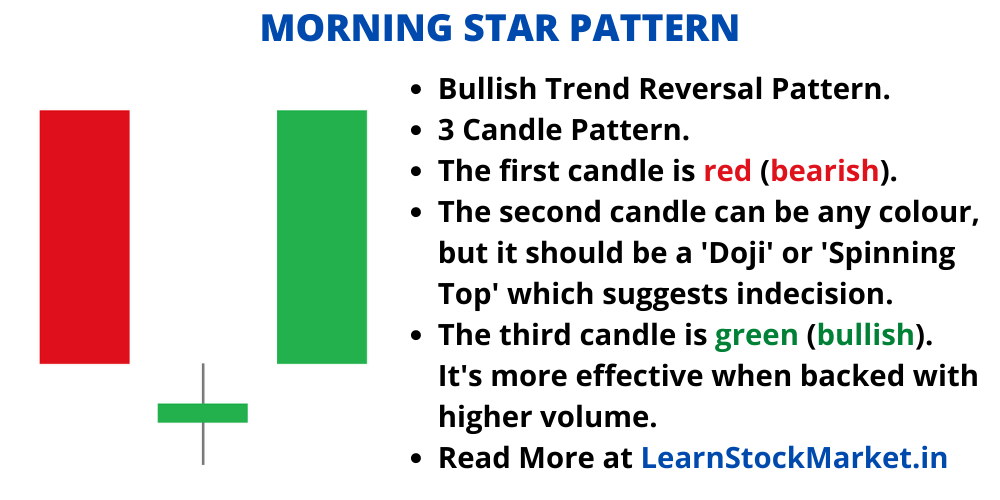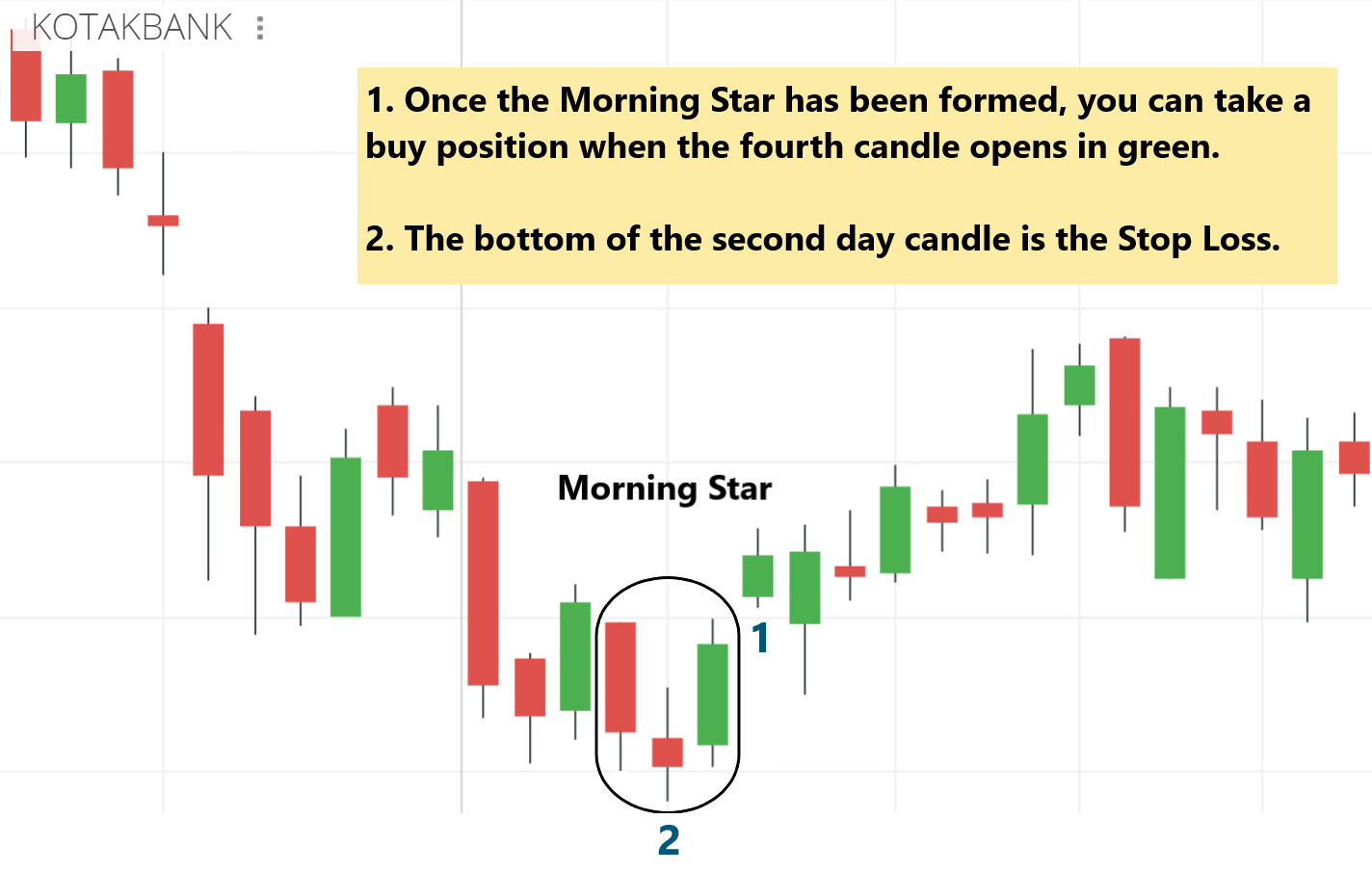The ‘Morning Star’ is a three candle pattern, which can form on the chart after a down trend.
It’s a bullish trend reversal pattern – which means the downtrend could end and the stock could rise upwards.
For the pattern to be called ‘Morning Star’, the following has to happen:
- The stock has to be in a downtrend.
- The first candle has to be red (bearish).
- The second candle has to have a small body and long wicks on both sides. The colour of the candle does not matter.
- The third candle has to be green (bullish). The body of the candle has to be around the same size as the first candle or larger.
- If the third candle is backed by comparatively higher volume, then the ‘Morning Star’ pattern will be more effective.

Psychology of Morning Star CandleStick Pattern
A stock has been in a downtrend. The sellers are beginning to get wary, because the price has already fallen a lot.
On the first day, there is a huge sell off and the price declines – creating a red candle on the chart.
On the next day, the selling continues with a gap down opening. When the prices get low, the bulls (buyers) step in and start buying.
The next day, the bears begin to lose their conviction as buying continues. The bears begin to cover their shorts, the stock rises further.
This creates a large green candle on the charts – suggesting a turnaround from downtrend to uptrend.
Also, if the opening, low and close of the 3 days are marked on a chart and a candle is created – it will look like a ‘Hammer’ on long time frame.
For example, a ‘Morning Star’ on daily chart could look like a ‘Hammer’ on the weekly chart. Both are trend reversal patterns.
Morning Star Trading Strategy

The above image is a real chart of Kotak Mahindra Bank.
After a long down trend, there was a Morning Star formation after which the stock moved upwards.
Traders can buy the stock on the third day itself if the third green candle is backed up with high volume.
Otherwise, traders can wait for the confirmation when the next candle – after the 3 Morning Star candles is also green (bullish).
The Stop Loss will be the low price of the second candle.
Profit can be booked depending on the formation of other candles or when other technical indicators suggest bearishness.
However, do note, taking your trades purely on candle stick patterns can be very risky. If there is a ‘Morning Star’ formation, which is backed up by strong volume – then the chances of your trade succeeding is higher.
Always keep a stop loss in place. If the stock goes below the ‘low’ of the second candle, the ‘Morning Star’ formation is failed. You need to book your losses immediately and not wait for prices to bounce back.
Stop Loss has to be decided before you take the trade. It should not be changed once you set it. The only exception to change your stop loss is if your trade is profitable. As the stock rises, you can keep a higher stop loss. This way, you won’t let go of the gains you have made.
Also, if the ‘Morning Star’ is backed by support areas on the chart, then the risk-reward ratio is even higher. You can also read the article on ‘Support and Resistance’ for more on this.
Another important point – Morning Star formations need not always be perfect in shape and size – as we have described above. Use common sense and your trading experience. Sometimes the second candle can be a ‘Doji’ without a candle body or it can be a ‘Spinning Top’ with a small body and large wicks. The third candle can sometimes be huge, suggesting bullishness.
Your focus should not be on perfect candle formations. Your focus should be on risk-reward, where you reward should always be much higher than your risk.
Before taking your trade, all you have to do is ensure that most indicators are pointing towards a change in trend. Take your trade in the direction in which the wind is blowing. After that, if the trade does not go your way, there is always a stop loss to cut your loss short.


Great job! Please keep it up!